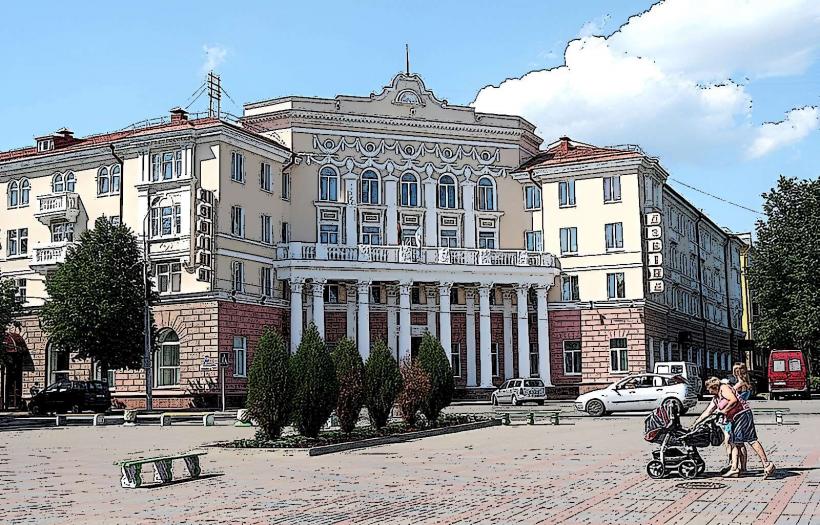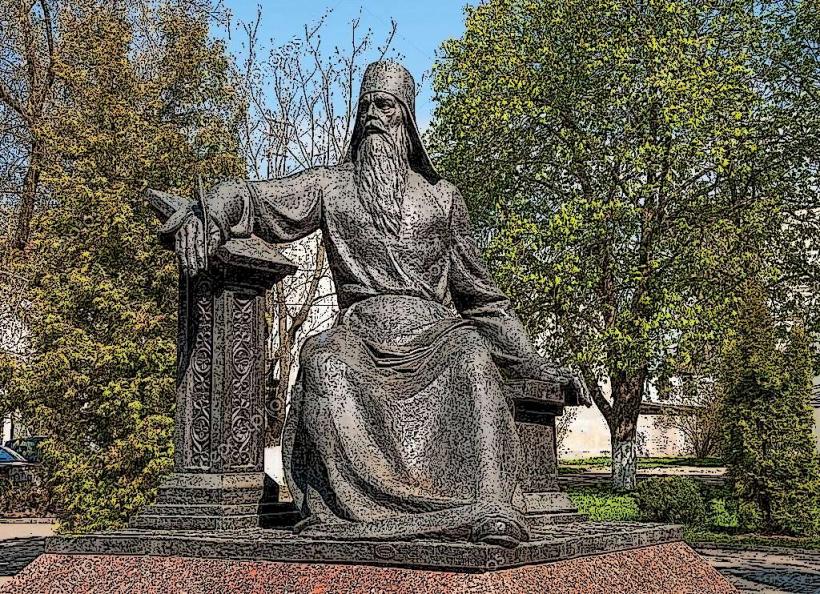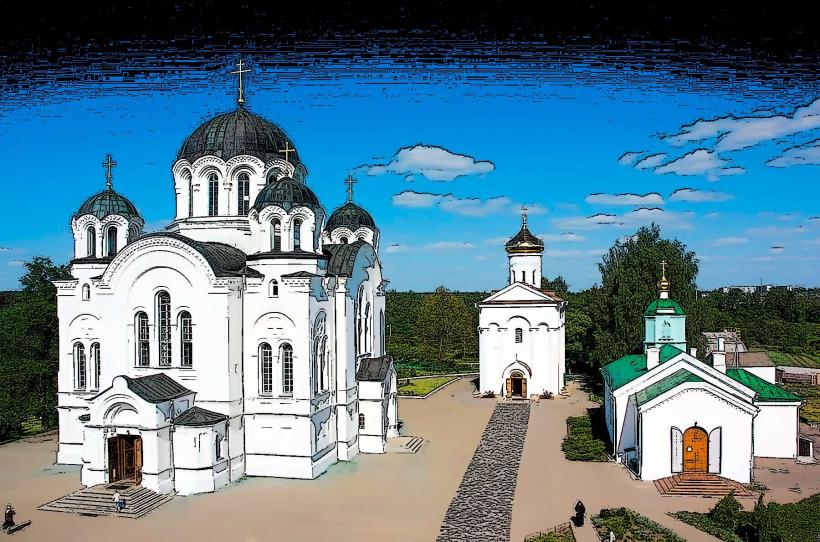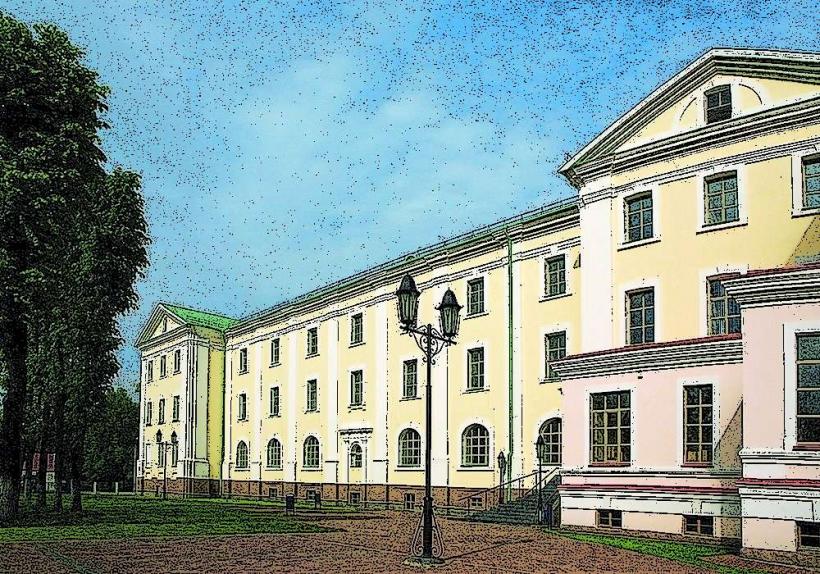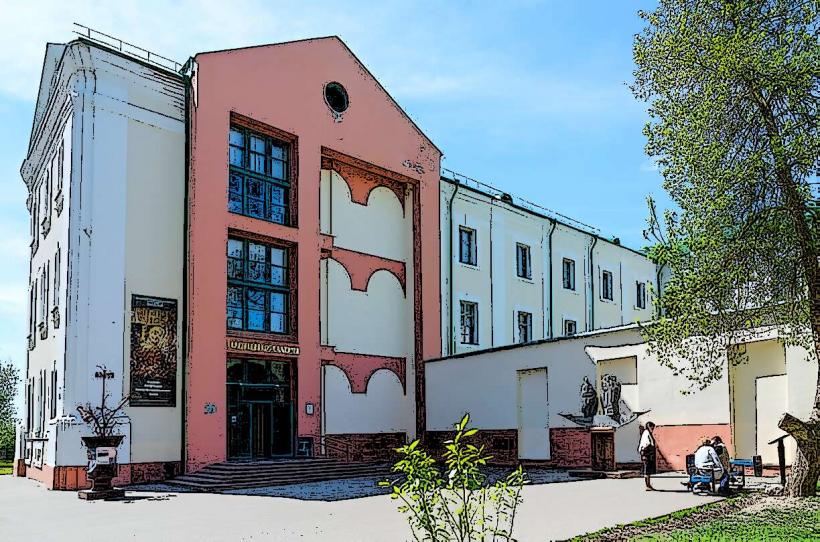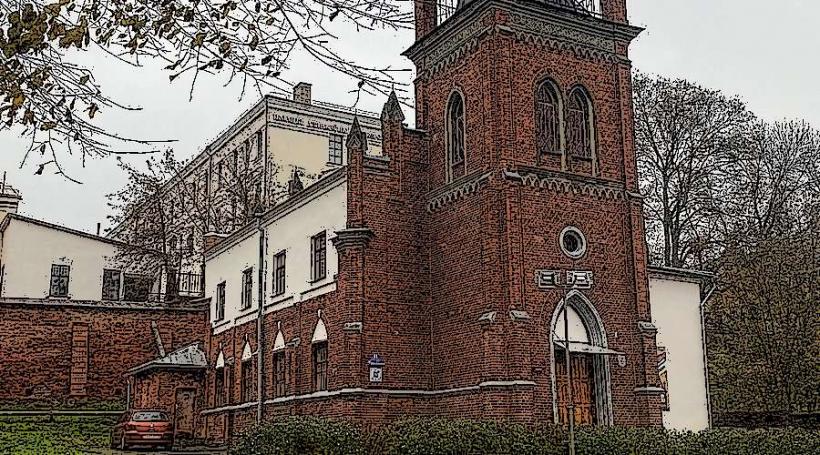Information
Landmark: Museum of Belarusian Book-PrintingCity: Polotsk
Country: Belarus
Continent: Europe
The Museum of Belarusian Book-Printing (Музей беларускага кнігадрукавання) is a significant cultural institution dedicated to the history and development of book printing in Belarus. Located in Polotsk, one of the oldest cities in Belarus, the museum plays an essential role in preserving and showcasing the rich tradition of printing and book-making in the country. Polotsk itself holds a special place in this history, as it was the site of the first printing press in Belarus.
1. Historical Context and Foundation:
The Museum of Belarusian Book-Printing is located in Polotsk, a city often referred to as the birthplace of Belarusian book printing. In 1562, the first printing press in the region was established by the Orthodox monk and printer, Francysk Skaryna, who is widely regarded as one of the most influential figures in the history of Eastern European printing.
- Francysk Skaryna is famous for printing the first books in the Belarusian language, including the Psalter and the Bible, using the Cyrillic script. His work was revolutionary for the region, and it helped spread literacy and the influence of the written word across Belarus, Ukraine, and parts of Russia.
- The museum, established in 1973, commemorates this important heritage and tells the story of how printing technology spread across the region, how it evolved over the centuries, and the impact it had on Belarusian culture and identity.
2. Museum’s Purpose and Collections:
The Museum of Belarusian Book-Printing serves as a repository of knowledge about the origins and development of book-making and printing technologies in Belarus. The museum's main objectives are to:
- Preserve historical artifacts related to the history of book printing.
- Showcase the development of printing techniques and technologies over time.
- Celebrate Belarus's role in the broader context of Slavic and Eastern European book-printing history.
- Educate visitors about the historical, cultural, and educational importance of books and printing in Belarus.
3. Key Exhibits and Highlights:
The museum houses an extensive collection of historical printing presses, manuscripts, early printed books, and printing tools used over the centuries. Some of the most important exhibits include:
- The Reproduction of Francysk Skaryna’s First Books: One of the museum’s most notable features is its display of early printed books by Skaryna, including his Psalter and Bible. These works were groundbreaking at the time and are considered some of the earliest printed books in the Slavic world.
- Printing Presses: The museum showcases reproductions of early printing presses that were used in Belarus and Eastern Europe. These presses were used by Skaryna and other pioneers of printing to produce religious texts and other important works that shaped the intellectual and cultural landscape of the region.
- Old Books and Manuscripts: The museum holds a collection of rare books from the 16th to the 18th centuries, including religious texts, educational materials, and other works that reflect the intellectual and cultural life of Belarus at the time.
- Printing Tools and Equipment: Visitors can see typesetting materials, engraving tools, wooden blocks, and other essential equipment used in the printing process, demonstrating how books were produced before the advent of modern printing technologies.
4. Architectural Features of the Museum:
The Museum of Belarusian Book-Printing is housed in a building that adds to its historical appeal. The museum is located in the former building of the printing press in Polotsk, which further connects the museum to the actual history of printing in the city. The building itself is an example of traditional Belarusian architecture, and its design reflects the historical significance of the institution it houses.
The Printing Press Building: The building that houses the museum was originally used as a printing press and was likely involved in producing the very books displayed in the museum’s collections. The historic setting makes the museum visit even more meaningful, as it allows visitors to experience the space where the region’s first printed works were produced.
Modern Exhibits with a Historical Context: Inside the museum, modern museum design complements the historical artifacts on display. The exhibits are organized thematically, making it easy for visitors to follow the timeline of the development of book printing in Belarus.
5. Educational Programs and Activities:
The Museum of Belarusian Book-Printing not only serves as a place for exhibitions but also engages the public through various educational programs, including:
- Workshops on traditional printing techniques, where visitors can learn about old methods of typesetting, printing, and binding books.
- Educational Tours for students and school groups to learn about the history of printing and its impact on education and culture.
- Lectures and Cultural Events: The museum hosts lectures and discussions related to book history, Belarusian literature, and the development of the printing industry in Belarus and the surrounding regions.
- Special Exhibitions: The museum also organizes temporary exhibitions on related themes, such as the history of Belarusian literature, the role of print in the development of national identities, and the evolution of printing technologies.
6. Cultural and National Significance:
The Museum of Belarusian Book-Printing holds a central place in the cultural identity of Belarus. It highlights the historical importance of literacy and the written word in shaping the country’s development, particularly in terms of religion, education, and national consciousness. The museum celebrates Belarus's early role in the Slavic printing tradition and its influence on the spread of Orthodox Christianity, as well as its role in Eastern European intellectual history.
- National Pride: The museum emphasizes the role of Francysk Skaryna in the history of Slavic book-printing, positioning Belarus as an important cultural and intellectual center in the East Slavic world. Skaryna’s achievements laid the groundwork for the development of the written word in the region and were instrumental in the spread of literacy and Christianity.
- Cultural Education: The museum contributes significantly to the cultural education of the Belarusian people by fostering a deep appreciation for the nation’s literary and historical roots. It promotes understanding of how printing and literature shaped the modern state of Belarus.
7. Visiting the Museum:
The Museum of Belarusian Book-Printing is a popular destination for those interested in the history of the written word, book-making, and Belarusian culture. It is especially significant for those interested in Slavic history, Eastern Orthodox Christianity, and the development of literacy in Eastern Europe.
- Location: The museum is located in Polotsk, one of Belarus's oldest cities, which adds to the historical and cultural context of the museum. Visitors can explore the town's medieval monuments and landmarks, such as Saint Sophia Cathedral, and enjoy a deeper understanding of the city’s pivotal role in Belarusian and Eastern European history.
- Opening Hours: The museum is typically open to the public year-round, with special tours available for groups. It is best to check with the museum for specific opening hours and any special events.
Conclusion:
The Museum of Belarusian Book-Printing in Polotsk is a vital institution that celebrates the deep historical connection between Belarus and the written word. It highlights the importance of book-printing as a cornerstone of Belarusian culture and intellectual life, and it commemorates the legacy of Francysk Skaryna and his monumental contributions to the development of literacy in Eastern Europe. The museum’s rich collections, educational programs, and historic setting make it an essential stop for anyone interested in the history of printing, literature, and culture in Belarus.


